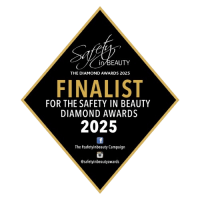When Can I Wear Glasses After Rhinoplasty? Key Timings
The process of rhinoplasty reshapes the nose and often involves altering the nasal bridge, where glasses typically rest. If you wear glasses, it is important to understand how and when to resume wearing them after surgery, as improper timing could impact your healing and final results. This guide will walk you through recovery stages, practical solutions, and expert tips to help you wear glasses safely and comfortably following rhinoplasty.
Understanding the Impact of Rhinoplasty on Glasses Wearers
Rhinoplasty changes the structure of the nose, often involving bone and cartilage adjustments. Since glasses rest directly on this area, wearing them too soon can apply pressure that disrupts healing or affects the final aesthetic outcome. Swelling and sensitivity during recovery also make the nose more vulnerable to marks and discomfort.
Knowing how rhinoplasty interacts with eyewear is essential for patients who rely on glasses for daily vision. With the right approach, you can avoid complications and protect your investment in both your vision and your facial appearance.
How Rhinoplasty Affects the Nasal Structure
Why Pressure on the Nose Matters During Recovery
After rhinoplasty, the nasal bones and soft tissue need time to stabilise. Wearing glasses too early can cause indentations, disturb healing cartilage, or even shift the shape of the nose. This is particularly true if the bridge of the nose was narrowed or elevated.
Because the healing nose is delicate, even lightweight glasses can interfere with results if worn directly on the nasal bridge. Protecting the nose from pressure during this phase is vital for maintaining the surgeon’s work and avoiding the need for revision.
Key Timelines: When Is It Safe to Wear Glasses After Rhinoplasty?
Each patient’s recovery timeline may differ slightly, but in general:
Post-Surgery Phase | Recommended Action |
Weeks 1–2 | Use a nasal splint under supervision |
Weeks 3–4 | Avoid wearing glasses entirely |
Weeks 4–6 | Consider using forehead supports or switching to contacts |
Months 3–6 | Return to lightweight glasses, depending on your surgeon’s advice |
Always follow your surgeon’s instructions. They will assess how your nose is healing and guide you on when it is safe to resume wearing glasses.
Best Practices for Wearing Glasses After Rhinoplasty
Protective Tools and Techniques
To reduce pressure on the nose during recovery, consider using:
- Forehead straps or supports – hold glasses above the nasal bridge
- Lightweight frames – reduce downward force on the nose
- Adjustable nose pads – for a more customised, pressure-free fit
- Bridgeless designs – avoid direct contact with the nasal bridge
- Foam barriers or gel pads – soften the impact if contact is unavoidable
These solutions can help protect the structure of the healing nose and improve comfort during the post-operative period.
Months Post-Op: A Gradual Return to Eyewear
When Can You Resume Wearing Glasses Normally?
By the three-month mark, your nose will likely be more stable, especially if no major complications occurred. At this point, most surgeons will allow the cautious reintroduction of lightweight glasses. You should still avoid heavier frames and check for any pressure marks or discomfort.
If you notice irritation, redness, or indentations, speak to your surgeon. Adjustments may be needed, or the return to glasses may need to be delayed further.
Conclusion
Rhinoplasty can bring outstanding aesthetic results, but it requires careful attention to aftercare, particularly for glasses wearers. To prevent pressure from interfering with your healing, avoid wearing glasses for the first few weeks and explore alternative options like contact lenses, forehead supports, or lightweight, bridgeless frames.
Always consult your surgeon for personalised advice, and do not rush the process. With the right precautions, you can protect your results and safely return to wearing glasses when the time is right.
Frequently Asked Questions.
Can I wear sunglasses after rhinoplasty, and when?
Yes, but typically not until 4 to 6 weeks after surgery. Sunglasses, like regular glasses, rest on the nasal bridge and can cause unwanted pressure. Ask your surgeon for personalised guidance based on your recovery.
What are the risks of wearing glasses too soon?
Wearing glasses too early can cause indentations, shift healing tissue, or affect the nose’s shape. This may result in the need for revision surgery, so it is best to follow your surgeon’s recommended timeline
Are contact lenses a safe option after rhinoplasty?
Yes, contact lenses are a good alternative because they avoid pressure on the nose. Just ensure that your eyes are healthy and that you follow proper hygiene protocols after surgery.
How do I choose the right glasses after surgery?
Look for lightweight materials, adjustable nose pads, or bridgeless frames. Your optician can help you find a pair that provides the best fit with minimal pressure on the nose.
Will I need to change my glasses after rhinoplasty?
Possibly. If your nasal bridge has changed shape, your old glasses may no longer fit comfortably. Your optician can help you make any necessary adjustments.
Our Procedures
Procedures We Perform.
Quick Links
Address
- 10 Harley St 10 Harley St, London W1G 9PF


